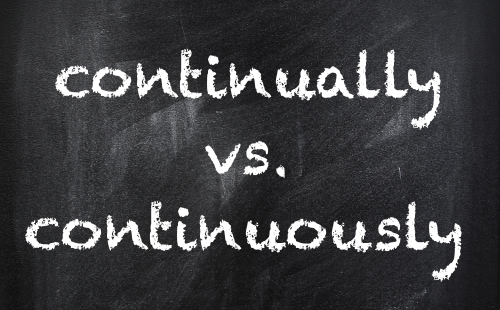Today we’re going to explore the meanings and uses of the adverbs continually and continuously.
These terms, along with their adjective forms continual and continuous, are often used interchangeably in speech and writing, but style guides urge writers to practice discernment when using continually and continuously. In formal contexts, continually should be used to mean “very often; at regular or frequent intervals,” and continuously to mean “unceasingly; constantly; without interruption.” To put this into context: reading grammar blogs continually, or at regular intervals, throughout the day might be a fun way to boost your knowledge about the English language, but doing so continuously, or without stopping, for the duration of a day would likely result in fatigue, hunger, and—dare we say—boredom.
Despite the rules of good usage outlined above, it is not uncommon for continually to be listed as a synonym for continuously in dictionaries, or for them to be used interchangeably in the wild. Both words come from the Latin verb continēre meaning “to hold together; retain,” and when continually entered English it meant what continuously does now.
One way to remember the difference is to use the letters in each term as a hint: continuously has an uninterrupted chain of Os and Us toward the end, reminding us that it means “uninterruptedly” or “unceasingly.” Continually, is interrupted by two jutting Ls, reminding us this term is associated with breaks, interruptions, and intervals. Knowing the difference between these terms will give you an advantage in formal settings, but don’t fret if you can’t keep the two words distinct all the time. After all, style guides are continually published, but the language is continuously changing.














